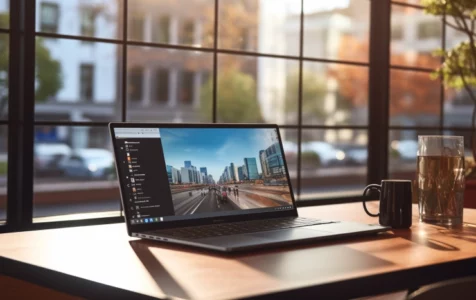Command Prompt is a powerful text-based interface in Windows, used for executing commands, performing administrative functions, and troubleshooting Windows issues. This guide will detail various methods to access Command Prompt on different Windows versions.
Search from the Start Menu
- Click the Start menu (Windows icon) on the taskbar or press the Windows key.
- Type “cmd” and choose “Command Prompt” from the list.
Access via the Start Menu in Windows 10
- Click the Start menu (the Windows icon) in the taskbar or press the Windows key.
- Navigate to the “Windows System” folder in the list.
- Choose “Command Prompt” from the folder group.
Utilize the Power User Menu (Windows 10/11)
- On your keyboard, press Win + X or right-click the Start Menu.
- Choose “Command Prompt” (Windows 10) or “Terminal” (Windows 11).
Note: You may also find PowerShell options in the Power User menu.
Access Through Windows 8 Apps Screen
- Click the Windows Start button.
- Swipe up to reveal the Apps screen (or use the down arrow icon with a mouse).
- Locate the “Windows System” section heading.
- Select “Command Prompt.”
Quick Access in Windows 8
Use the Power User Menu by pressing Win + X or right-clicking the Start button to choose “Command Prompt.”
Open with a Command (All Windows Versions)
In the command-line interface, enter “cmd” to open Command Prompt.
Expert Tip: For smoother PC performance, consider using a PC optimization tool. It handles junk files, incorrect settings, and harmful apps. Make sure it's right for your system, and always check the EULA and Privacy Policy.
Special offer. About Outbyte, uninstall instructions, EULA, Privacy Policy.
Accessing Command Prompt on Older Windows Versions
For Windows versions older than XP, like Windows 98 and Windows 95, use the older MS-DOS Prompt program found in the Start menu.
Opening as an Administrator
Certain commands, like “sfc” for Windows file repair, need Command Prompt to run as an administrator. You can achieve this by right-clicking and choosing “Run as administrator.”
Using Command Prompt on a Mac (MacOS)
Mac users can access a similar tool called “Terminal” by searching for it in the Launchpad or navigating to “/Applications/Utilities.”
Quick Folder Access in Windows Explorer (Windows 10/11)
- Open File Explorer.
- In the address bar, type “cmd” and press Enter to open Command Prompt with the path of the current folder already set.
Creating Shortcuts (Windows)
You can create desktop shortcuts to open Command Prompt quickly. Right-click the shortcut’s properties to set it to run as an administrator if needed.
Conclusion
Command Prompt remains a valuable resource for Windows users, offering efficient command execution and access to unique tools. These methods offer convenient ways to access Command Prompt across different Windows versions. Command Prompt is a versatile tool with various applications, and following these steps will help you use its capabilities effectively.
- Accessing Command Prompt: You can access Command Prompt through various methods, including the Start menu, Power User menu, File Explorer, and more, depending on your Windows version.
- Administrator Access: Some tasks require Command Prompt to be opened as an administrator. You can do this by right-clicking and selecting "Run as administrator."
- Multiple Instances: You can open multiple instances of Command Prompt simultaneously for efficient multitasking.
- Using PowerShell: If you encounter PowerShell but prefer Command Prompt, you can easily switch back by adjusting a setting in Windows.
- Customization and Shortcuts: Consider creating shortcuts or pinning Command Prompt to the Taskbar for quick and easy access.
- Versatile Tool: Command Prompt is a versatile tool for executing commands, performing administrative functions, and troubleshooting various Windows issues.
FAQ
What is Command Prompt?
Command Prompt is a text-based interface in Windows that allows you to execute commands and perform various administrative tasks.
How can I open Command Prompt on Windows 10 or 11?
You can open Command Prompt on Windows 10 or 11 by using the Start menu, Power User menu, or searching for it in the search bar.
Can I open Command Prompt as an administrator?
Yes, you can open Command Prompt as an administrator by right-clicking and selecting “Run as administrator.”
Is it possible to run multiple instances of Command Prompt?
Yes, you can run multiple instances of Command Prompt simultaneously for multitasking.
What if I encounter PowerShell but prefer Command Prompt?
You can switch back to Command Prompt by adjusting a setting in Windows.
Are there shortcuts or customization options for Command Prompt?
Yes, you can create shortcuts or pin Command Prompt to the Taskbar for quick access and customization.
What are some common use cases for Command Prompt?
Command Prompt is used for tasks such as managing files, terminating processes, and configuring various settings on your Windows system.
